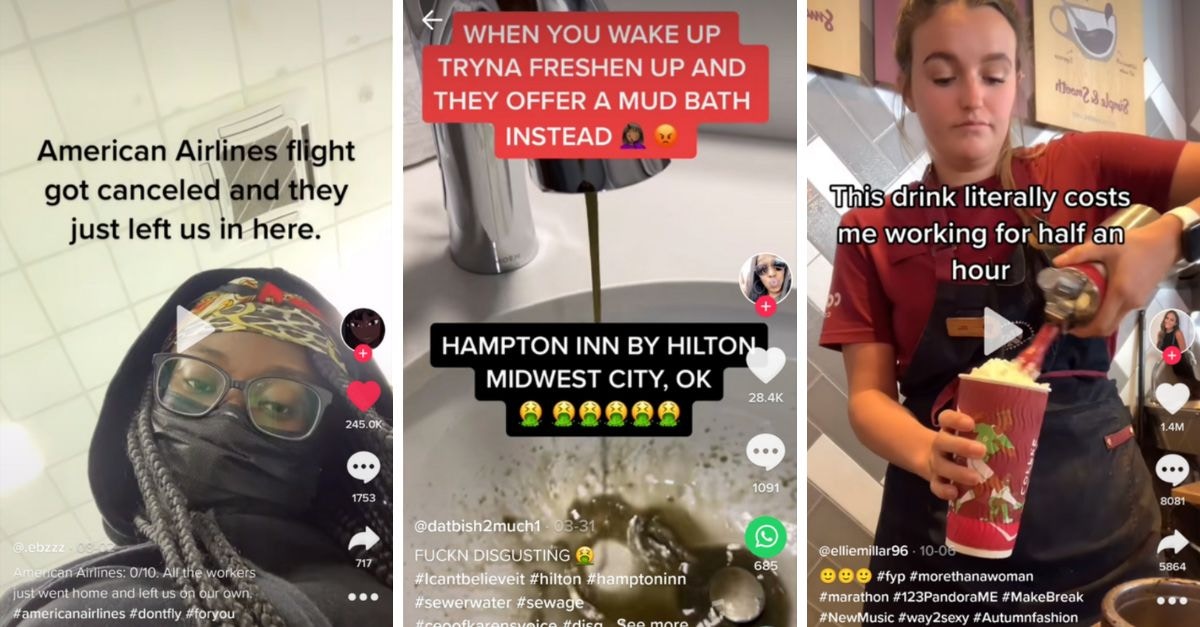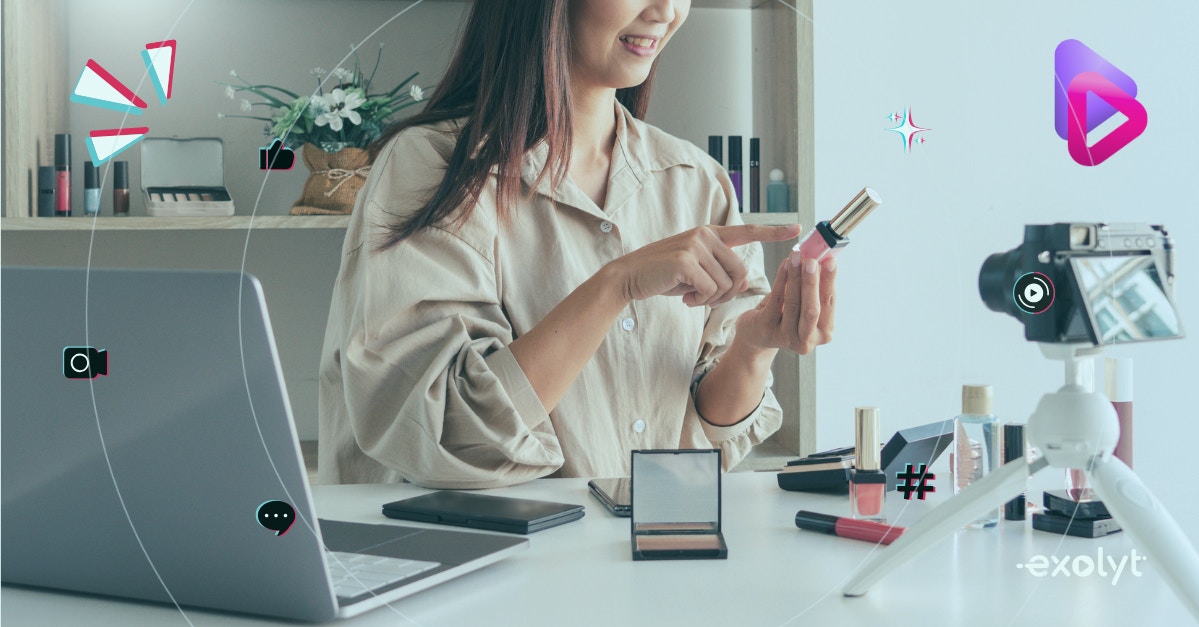User-generated content (UGC) is any content created not by the brand itself, but by its loyal fans, customers, influencers, brand ambassadors, or the wider audience. Your consumers take part of the work off your hands by producing content that highlights your products or services. At its best, UGC gives you a steady stream of fresh material to share, helping you grow brand awareness, attract new customers, and foster a genuine community around your business. After all, word of mouth is famously one of the best ways to reach new customers, and today this also works online with users recommending your products to others.
Why should you use UGC in your consumer businesses?
- Build trust through authenticity and social proof
Audiences have had enough of typical ads: 74% of people said they are tired of social media ads. Instead, they want to see real people sharing their real experiences with a product or service. That’s where user-generated content comes in. UGC is built on authenticity, which 86% of consumers believe is important to support a brand. Unlike polished sales pitches, UGC feels genuine because it comes from everyday users.
The numbers back this up: people are 3.1x more likely to say UGC is authentic compared to brand-made content, and 5.9x more likely to say that user-generated content is the most authentic compared to influencer content. With endless choices available on the internet, users don’t waste time on brands they don’t trust. UGC doubles as social proof with users openly sharing their honest feedback and showing new customers that your product is trusted by those who bought it.
- Increase brand awareness
When your customers post about your product, their followers see it and instantly expand your brand’s visibility beyond your own channels. On platforms like TikTok and Instagram, personal profiles and authentic content often outperform brand accounts, generating more engagement and organic reach. This means new potential customers can stumble upon your product naturally in their feeds. In fact, 81% of TikTok users say the platform introduced them to something they didn’t know they liked, and 80% of Instagram users say the app helps them decide whether to buy.
One famous example of UGC is Coca-Cola’s Share a Coke campaign: by printing names on bottles, Coca-Cola inspired people to share photos with their Coke on social media. With success: The hashtag #ShareACoke has now surpassed a billion impressions, and the campaign increased Coca-Cola’s revenue in 2014 by 11% compared to 2013.
@abbie.may13 Who will you Share a Coke with? Make sure you scan the QR code on your can to head to the Share a Coke Hub to get a personalised can! #ad @Coca-Cola #ShareACoke
♬ original sound - abbie may 🤍
- Save money with an endless stream of content
For many organizations, producing consistent, high-quality content is a constant challenge, especially with small teams and limited resources. When done right, UGC provides a consistent flow of user-made photos, videos, and reviews, saving brands from spending hundreds of thousands on TV commercials or polished social media campaigns. It also takes pressure off your marketing team, freeing them to focus on strategy instead of nonstop content creation.
- Boost your conversion rates and drive sales
Word-of-mouth is one of the most effective deciding factors in sales, and UGC brings that influence online. It's a powerful medium, as 79% of consumers shared that UGC impacts their purchasing decisions. UGC allows brands to use more community-driven content that feels less like traditional advertising and more like a conversation among friends. A glowing review or authentic testimonial video can be the final nudge that convinces an undecided customer to hit “buy.”
- Learn from your audience
UGC is a goldmine of feedback, offering direct insight into how customers experience your brand. It shows what people value about your product, how they talk about it, and how they use it in their daily lives. You can take this language to refine your marketing copy, lean into the voice of happy customers, and even spot opportunities for product improvements. UGC gives you an insight into what frustrates your customers about your product or what features they wish existed. This is the kind of real-world experience you won’t find in a focus group.

UGC offers a window into consumer feedback, both good and bad. This helps to quickly identify and respond to unsolicited crises or PR issues, minimizing the impact on brand reputation.
The Different Types of UGC (on TikTok)
TikTok thrives on creativity, authenticity, and community participation, making it the perfect platform for user-generated content (UGC). From viral challenges to lifestyle videos, UGC comes in many forms, each helping brands connect with audiences in a more engaging and relatable way. Let’s explore the most popular types of TikTok UGC and how they work.
- Product reviews and ratings
Product ratings and reviews are the most common and often the most impactful form of UGC. In fact, nine out of ten consumers say they consider reviews before buying. They’re everywhere, from e-commerce sites to platforms like Yelp and Google Maps, and you can also showcase them directly on your own website and in marketing materials. Depending on your industry, certain platforms carry extra weight.
On TikTok, this is a form of UGC where users showcase, test, or explain products in short videos. These posts are effective because they provide social proof by introducing the product to new audiences in an authentic and relatable way—and audiences trust real users more than advertisements. They may include “before and after” skincare routines, unboxing experiences for tech gadgets, or step-by-step tutorials.
Example of a product review from TikTok #cleantok
- Visual UGC
Visual UGC is the go-to content on social media platforms like TikTok, Facebook, or Instagram. Photos and videos provide real proof that customers are enjoying your product, whether it’s someone’s skin improving after using a new cleanser or their pet playing with a new toy.
With social media's "TikTokification,” audiences are used to engaging with visual-first content, which is not only more engaging but also more likely to go viral. Encouraging users to share their own experiences can create a community-driven ecosystem of content around your brand.
A great example is GoPro, which invites users to capture and share their most exhilarating moments, from extreme sports to epic travels. Many of these videos have gone viral, showcasing the product's durability and versatility, including Felix Baumgartner’s freefall from the stratosphere.
- Hashtag Challenges
Hashtag challenges are campaigns where brands or creators encourage users to produce content around a specific branded or trending hashtag. They work because they turn content creation into a participatory, community-driven experience, often leading to viral moments. Users enjoy showing off their creativity, and the hashtag aggregates thousands of contributions in one searchable feed.
A classic example is Guess’s #InMyDenim challenge, which invited users to share outfit transformations in short, stylish videos. The campaign generated massive engagement, with thousands of authentic user-generated posts highlighting the brand.
@kuhleeuh Had a fun day #inmydenim ✨👖✨ @guess #style #OOTD
♬ original sound - Kalia 🎤❤
- Duets and Stitches
Duets and stitches allow TikTok users to interact directly with existing content. In a duet, a user can appear side-by-side with an original video, while a stitch lets them integrate part of another video into their own. This works well because it encourages engagement, collaboration, and amplification of content while giving users creative freedom.
For example, a fitness brand might post a workout tutorial, and users can duet it to demonstrate their own versions of the exercises, effectively creating thousands of user-driven variations while promoting the brand organically.
- Collaborative Content
Collaborative content happens when brands and users, often through influencers or superfans, co-create videos or campaigns. This type of UGC works because it feels authentic, builds trust, and strengthens brand affinity.
One such example of this effort was showcased by Chitpotle, when the brand participated in co-creating a new item for the menu inspired by a viral UGC creator's video. The creator shared a steak quesadilla hack that wasn't on the menu, but the brand teamed up with the influencers to fast-track it, turning the online hack into a menu item. Instead of doing a simple sponsored post with the original TikTok creators once the new menu item was ready, Chipotle included the influencers and their followers in adding it to keep the audience engaged and interested.
@chipotle Everybody relaxxxxx. It’s coming to the app in March. @Keith Lee @Alexis Frost #chipotle #quesadillahack #fajitasquesadilla #chipotlehack
♬ original sound - Chipotle
- Day-in-the-Life / Lifestyle Content
Day-in-the-life or lifestyle content is where users showcase products or experiences as part of their everyday routines. This type of UGC is effective because it’s relatable, authentic, and aspirational, helping audiences see how a product fits naturally into real life.
Fitness influencers, for example, might feature a protein supplement in their morning routine, while travel enthusiasts highlight luggage or tech gadgets during trips. Lifestyle content allows brands to connect emotionally with audiences while demonstrating real-world value.
@ninojulia In paid collaboration with @blockhead.store | A DAY IN OUR LIFE AS A COUPLE AND DANCERS ✨
♬ original sound - Nino&Julia
How to create a UGC marketing strategy to grow your business?
It can be tempting to just launch a campaign and see how people react, but without a plan, UGC can quickly backfire. A classic cautionary tale is McDonald’s #McDStories campaign, which was hijacked with customer horror stories and turned into #McFail within hours.
To avoid mistakes like this, start by:
- Step back and define your strategy. Think about how your most loyal customers discovered you in the past, and double down on those channels.
- Use social media analytics tools like Exolyt to understand what people are already saying about your brand on TikTok, what content resonates, and where peer recommendations are happening.
- Treat UGC as a long-term strategy, not a one-off campaign. Monitor UGC to find the right spokesperson, filter, and repurpose their content to make sure it aligns with your brand values.
(Done right, UGC fuels your content pipeline at lightning speed. Without structure, though, it can spiral out of control. A smart content management system will help you turn raw user contributions into a scalable growth opportunity.)
- Once you know where to focus, you can also design your campaign around your users. Making it easy for them to contribute by suggesting a clear hashtag, and preparing on your end by allocating time and resources to manage the content that comes in.
- During the campaign, monitor all brand-related hashtags and mentions, which a social listening tool can make easy.
Exolyt captures the essence of UGC on any brand or topic and allows users to explore related content and insights holistically. It also monitors published or collaborative organic content by UGC creators in the TikTok ecosystem.
Here's how you can listen and monitor UGC for boosting influencer marketing on TikTok.
Another way to strengthen your UGC strategy is to showcase your brand advocacy. Highlight what your brand stands for and tie UGC to a bigger mission, making contributions feel more meaningful and relevant. You can even collaborate with other companies or non-profits to amplify your reach and support a cause you care about.
Starbucks’ White Cup Contest is a great example. By inviting customers to design their own reusable cups, Starbucks generated lots of creative content and promoted sustainability and brand loyalty at the same time.
How to smartly collect UGC for your brand?
- Ask for it: The best way to collect UGC is to simply ask for it. Many customers happily share their feedback or reviews. Encourage customers to use a branded hashtag and tag your profile for easy visibility.
- Make it personal: Thank your customers after a purchase and invite them to share their experience. Personalize your message to increase response rates (e.g., “Hi Lauren, how are you enjoying your new water bottle?”).
- Offer an incentive: Building an audience takes time, so giving customers a little extra motivation can help. Think raffles, a discount, or a free product on their next delivery for every post shared. You even tie your UGC to your loyalty program and offer perks to customers who share on social about you.
- Always ask for permission: Before sharing UGC, make sure you have the legal permission to use the submitted material. Even if a post is public, you cannot just take it and use it for your marketing. Always give proper credit by tagging or mentioning the creator
How to measure TikTok UGC success using Exolyt?
Once your UGC campaign is live, measuring its impact is key. With Exolyt, you can track the performance of your UGC on TikTok. Here are some examples of features you want to use:
- Social listening:
Start with Social Listening! Instead of running costly brand surveys, Exolyt helps you understand how customers feel about a brand, product, service, or competitor directly on TikTok. With sentiment analysis and share-of-voice tracking, you can quickly check brand mentions and their reception. With trends and video tracking, you can follow your UGC creators, find out their needs and preferences, and turn them into your loyal advocates.
Here's how you can track all the different forms of brand mentions on videos, tags, captions, comments, and in-video content on TikTok via Exolyt - check here!
- UGC Video growth and performance
Exolyt gives you a clear view of how your UGC performs over time by tracking key metrics like views, likes, comments, shares, and engagement rates. You can follow the growth curve of each video to spot when it’s gaining momentum or leveling off, helping you understand what resonates most with your audience. This makes it easier to identify winning content and replicate that success in future campaigns.
- Hashtags
With Exolyt, you can track the growth of multiple hashtags that influencers and UGC creators are using. This goes beyond your dedicated campaign hashtag: By monitoring related terms and trending topics, you can uncover a wider range of content connected to your brand. You can also see which hashtags and what kind of content are performing well and create your own campaign accordingly.
- Influencer campaigns:
When you’re running UGC campaigns with influencers, Exolyt makes it easy to monitor all creator videos in one place. You can group videos into the same folder and compare performance side by side, including metrics like CPM. The Influencer Campaign monitoring feature lets you track both real-time and past campaign results within any chosen time frame, giving you a complete view of how your influencer and UGC collaborations are performing.
Here's how you can get started with Influencer Marketing on Exolyt - Check here!
Conclusion
UGC is more than just content; it’s a growth engine powered by your customers. By encouraging authentic stories, managing them intelligently, and measuring results with tools like Exolyt, you can turn user creativity into a scalable growth opportunity.
Get started with TikTok social listening today
Get started with a free 7-day trial, or connect with our team to learn more about the platform's features and potential use cases.


